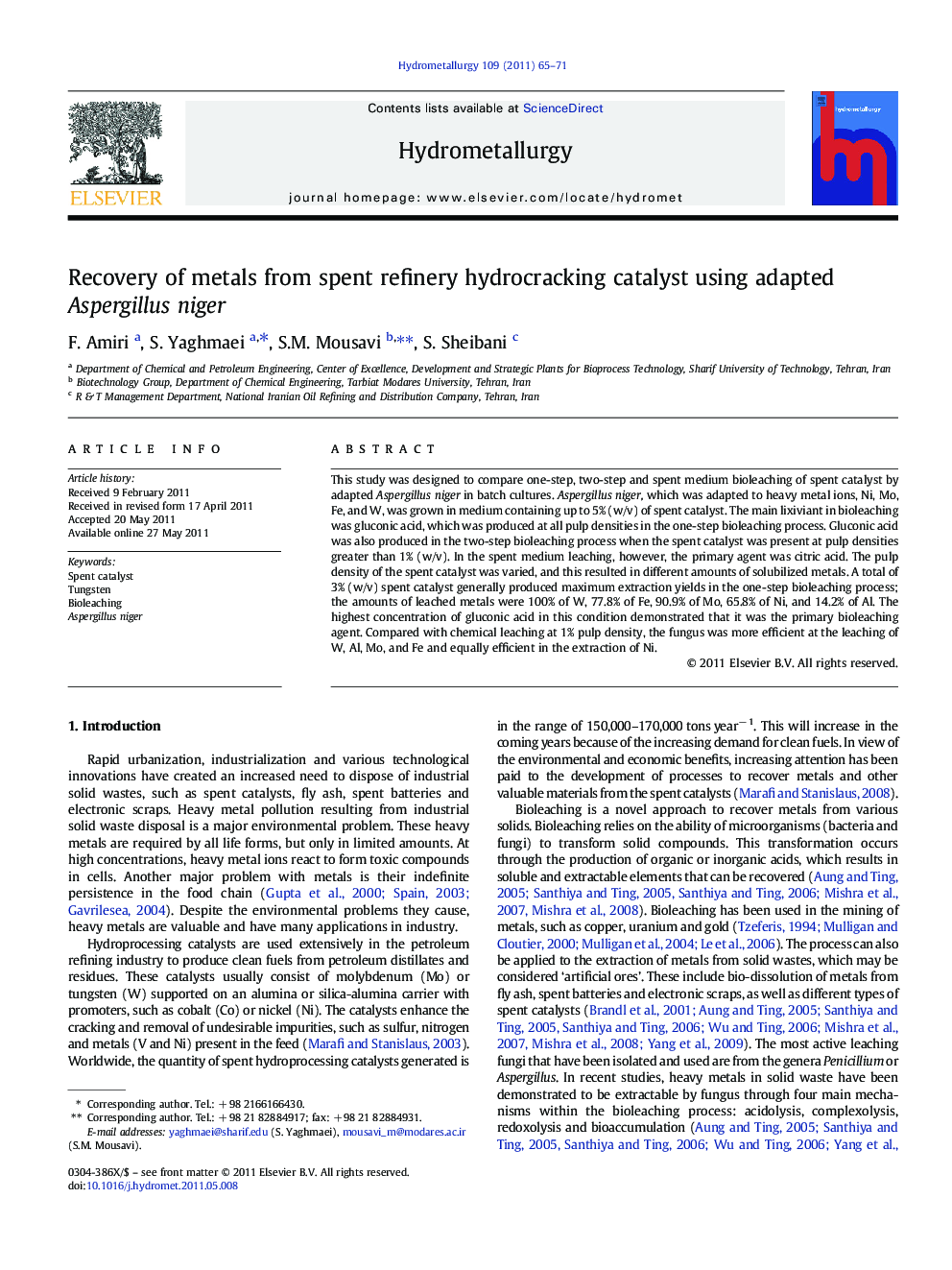| Article ID | Journal | Published Year | Pages | File Type |
|---|---|---|---|---|
| 212642 | Hydrometallurgy | 2011 | 7 Pages |
This study was designed to compare one-step, two-step and spent medium bioleaching of spent catalyst by adapted Aspergillus niger in batch cultures. Aspergillus niger, which was adapted to heavy metal ions, Ni, Mo, Fe, and W, was grown in medium containing up to 5% (w/v) of spent catalyst. The main lixiviant in bioleaching was gluconic acid, which was produced at all pulp densities in the one-step bioleaching process. Gluconic acid was also produced in the two-step bioleaching process when the spent catalyst was present at pulp densities greater than 1% (w/v). In the spent medium leaching, however, the primary agent was citric acid. The pulp density of the spent catalyst was varied, and this resulted in different amounts of solubilized metals. A total of 3% (w/v) spent catalyst generally produced maximum extraction yields in the one-step bioleaching process; the amounts of leached metals were 100% of W, 77.8% of Fe, 90.9% of Mo, 65.8% of Ni, and 14.2% of Al. The highest concentration of gluconic acid in this condition demonstrated that it was the primary bioleaching agent. Compared with chemical leaching at 1% pulp density, the fungus was more efficient at the leaching of W, Al, Mo, and Fe and equally efficient in the extraction of Ni.
Research highlights► The main lixiviant in bioleaching using Aspergillus niger was gluconic acid. ► The main agent in spent medium leaching was citric acid. ► Variation of pulp density in the medium caused different values of solubilized metals. ► The highest metal extraction value was related to W, Mo, Fe, Ni, and Al respectively.
